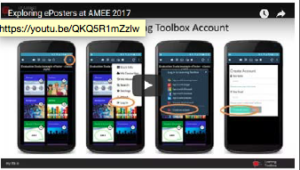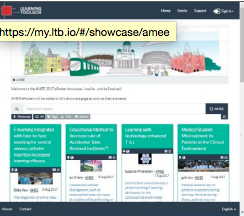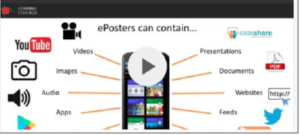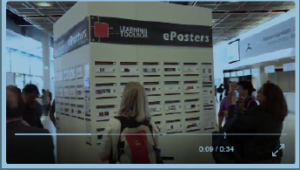Ten years blogging – five years active blogging
Today (11.11.2017) I noticed by chance that I had started my career as a Pontydysgu blogger exactly ten years ago. The start was not great and there were periods of hibernation. Although I renamed my blog I didn’t quite get the swing immediately. But then, about exactly five years ago (16.11.2012) I started blogging on the Learning Layers (LL) project – and became a regular blogger. Now, almost one year after completing LL project I have kept myself busy with reporting on the follow-up activities. And indeed – during these active years – I have also learned to write on other topics alongside the work-related blogs. These anniversaries call for a brief reflection on my ideas during the earlier phases and during the active project-related blogging and in the follow-up phase.
I-Europe – The difficult beginning
I first named my blog as “I-Europe”. This needs an explanation. In the ECER conference in 2003 in Hamburg there was a special session of the VETNET network under the heading “Open meeting”. Alan Brown had initiated it to discuss different options for European cooperation (independently of EU-funding). He was at that time working part time as a programme director for a national research programme and had the opportunity create networking among similar research councils. Alan presented a preliminary framework “Learning in Knowledge Society (LinKS)”. I came up with a parallel initiative “I-Europe” – to promote knowledge development on international, innovative, integrative and inclusive developments in European vocational education and training cultures. Obviously, I didn’t have institutional backing or resources for supporting any practical measures based on such framework (I had just recently ceased to work as Cedefop project manager). However, my initiative had some positive feedback, but there was very little that we could have done.
Four years later I thought that I could start a new round of discussions. I had got settled to ITB in Bremen and started working on transnational projects that included fieldwork. At that time the European policy processes were geared to the framework processes – the Bologna process promoting the European Higher Education Area and the Copenhagen process pushing forward the European Qualification Framework (EQF). A working group in ITB had prepared a critical discussion paper on the EQF. I wanted to take the discussion further – to positive ideas on thematic knowledge development at the European level. But once again I had to observe that I was floating high up – and couldn’t get my ideas properly grounded.
Working & Learning – a new start (but shaky)
After some time and some self-critical reflections I decided to try a new start with a renamed blog. “Working & Learning” seemed to me an appropriate title because it referred to my research context and to the way I wanted get my blogging grounded. I was hoping that I could rely strongly on the projects of that time – Consultation seminars (on teachers and trainers in VET) and the network ‘Trainers in Europe”. However, the blogs for the Consultation seminars had to published exclusively on the project website, whilst the Trainers in Europe network allowed publishing on multiple websites. That already caused a split in the project landscape and made it difficult to reflect on the work in parallel activities. Two further projects of that time – the Politics project and Coop-PBL in VET – required content creation on the respective project websites. At that time I didn’t see any added value in posting on multiple websites. Therefore, I ended up with another period of hibernation with my blog.
Working & Learning gets a new swing with the Learning Layers project
The start of our major EU-funded research & development project Learning Layers (LL) changed the situation radically. We (ITB) had joined in the consortium at the late phase of preparations and we had the responsibility to coordinate the work with application partners in the Construction pilot in Germany. So, we had to work ourselves in and position ourselves as a research partner with genuine research contribution. And the project schedules pushed us into a rapid start (the initial interviews, the Application Partner Days, the preparation of the User Stories, the Helsinki Design Conference …). All this brought me back to blogging – and I got accustomed of regular blogging.
In the beginning this was just quick documentation on activities and events. But gradually there was more in it – reflection on lessons learned in the fieldwork, discussion on working issues, reorientation in the co-design work, introduction of training activities … In addition to this we redefined some aspects of the work as ‘development projects’, had a consortium-wide “Theory Camp” and prepared sustainability plans. The ‘hot’ phases of the work started when the idea of Learning Tool started to take shape, when the multimedia training was expanded to the “Theme Room” campaign and when the Learning Toolbox was piloted in the field. Furthermore, much of the discussion on the final reporting was supported by numerous blogs posts. At the end of the day, the annual logbooks of LL-related blogs were rather massive documents.
Working & Learning continues with follow-up activities of the Learning Layers project
When the Learning Layers project had reached the stage of final review and completed the final-final reporting duties, this could have been the end of the story – both for the project and for the project-related blogging. But it was not the case. Instead, the main actors in the Construction pilot – ITB, the application partners and the developers of the Learning Toolbox were keen to move on to follow-up activities. Although it was not easy to find appropriate ways to continue the development work and to find suitable funding opportunities, several smaller follow-up initiatives emerged. In this way the work with Learning Toolbox was linked to shaping of new ecosystems for coordinating work processes and/or supporting integrative training and learning arrangements. Moreover, the challenge to support the multimedia training for trainers and instructors has become actual time and again. All this makes me confident that there is work to be done in the follow-up activities.
– – –
I guess this is enough as a quick review and reflection on lessons learned. I may not have achieved a record number of blog posts during the ten years (and definitely not during the first five years). But that doesn’t matter to me. I have gone through quite a learning journey and found my way of blogging during the last five years. And with that I can be happy to continue.
More blogs to come …





